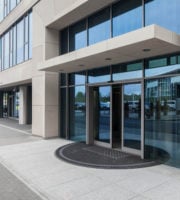Earlier this year, the government revealed ambitious new carbon emission targets that aim to reduce the country’s emissions by at least 68% in the next decade. While the UK has made some progress towards their goal of zero emissions by 2050, having already cut emission levels to a far greater extent than other similarly developed countries, there is still a lot of work that needs to be done by both the government and the citizens of the UK if the goal is going to be met.
One of the ways in which people can help reduce the carbon footprint of their home or business, as well as save on heating costs, is through the use of heat recovery ventilation (MVHR) systems in their building.
What Are MVHR Systems?
MVHR systems, or mechanical ventilation heat recovery systems, aim to reduce the heating and cooling demands of a building through a process called heat exchange. Using a ventilation system positioned at the top of the building, the MVHR system uses the existing air that is already in the building to heat the air that is being drawn in. As cold air from the outside is pulled through the MVHR system, heat from the stale air that is being expelled from the building is drawn out and transferred to the fresh air. This transferral of heat causes the fresh air to be warmed, thus reducing the amount of new heat that needs to be created to heat the building. This is just a basic overview of what is quite a complex process. Visit BPC Ventilation for more information about how MVHR systems work, how they are revolutionising the heating industry, and which is the best unit for your home or business.
How Can MVHR Systems Reduce Carbon Emissions?
Typical central heating systems account for an average of 27% of the energy consumption of the typical home in the UK, with water heaters accounting for another 14%. Due to the heat exchange process that MVHR systems employ to warm the air in the system, 60 to 90% of the heat from the stale air is extracted before the air leaves the building. This results in massive energy savings as the environment within a building is kept fairly constant, removing the need for constant heating. Additionally, by heating the entire building, an MVHR system can reduce the heating costs of water within the building, further reducing the carbon footprint of the entire building.
What Are Some of the Other Benefits of MVHR Systems?
Aside from cost-saving benefits and a reduction in a building’s overall carbon emission, MVHR systems also present several other benefits. MVHR systems offer improved air quality in comparison to other heating systems with less humidity and condensation present in the air. The air that is pumped through an MVHR system is also run through several filters which removes irritants like pollen as well as pollution, providing long-term health benefits for the people in the building.
Thanks to their ability to increase the energy efficiency of buildings as well as their cost-saving potential, MVHR systems are becoming a popular heating choice in modern buildings. Before choosing an MVHR system for your building, be sure to consult with heating experts who can help you choose the right system for your needs.







